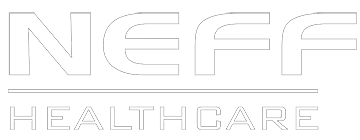For at least three-and-a-half decades now, the subject of changes in healthcare has been a hot topic among healthcare stakeholders in the United States. At times these conversations have flirted with the idea of innovation. But at no time in my memory has the impetus for significant change — even innovation — been so palpable.
Covid-19 on its own would have been enough; but the convergence of a global pandemic, a severe economic downturn and a political inferno has escalated the rhetoric and accelerated the evolution of each aspect of not only the conversation, but in some quarters, the nature of aspects of the healthcare ecosystem.
In a recent White Paper on this evolving ecosystem, the global management consultant, McKinsey & Company, suggests that “organizations can consider ways to use healthcare ecosystems to improve patient experience and health, while reducing total costs.”
On the face of it, this seems like an easy hypothesis with which to agree; however, I’d suggest that this statement reflects the problem in our approach to healthcare in the United States. Namely, that two-thirds of the equation has nothing to do with caring for the patient.
Innovation in the ecosystem — every part of the healthcare universe — are inevitable. The question is what will drive that innovation. Will it be driven purely by advances in technology? Or in systems and process that deliver efficiencies and profitability?
Or will the innovations that we bring to America’s 21st century healthcare challenge be driven by a singular and relentless focus on the patient?
The kind of enduring changes that will serve humanity not for a decade or two, but for generations, begins with returning the patient to the center of the healthcare ecosystem.
If we are able to rise to the challenge, and reinvent healthcare around the guiding principle that everything we do, every investment we make and each advance we pursue aligns with an unwavering commitment to provide patients with the highest level of care, we have a shot at regaining our direction.
This means that as we seek to build out each area of a 21st century healthcare ecosystem, we test actions and motives against this guiding principle — the care of the patient comes first.
If we abide by this principle many of the “thorny” issues related to research, treatment, privacy and delivery mechanisms are evaluated in this light.
It means that we reevaluate the way in which we view, manage and relate to the human beings who interact with the patients. It means the one part of the ecosystem where we absolutely cannot cut corners is those individuals who deliver the care.
And it means that every decision is made in the context of its impact on patients.
The healthcare ecosystem worthy of our time and commitment is one that lives up to the underlying mission to which every healthcare organization I know subscribes. It is not to have larger buildings and greater campuses…or newly capitalized technology. Everyone I know in this industry got into it because of a deep desire to deliver superior healthcare to the patients in our communities.
It all begins by placing the patients where they belong — at the center of the healthcare ecosystem we are building. And this is our pledge.

